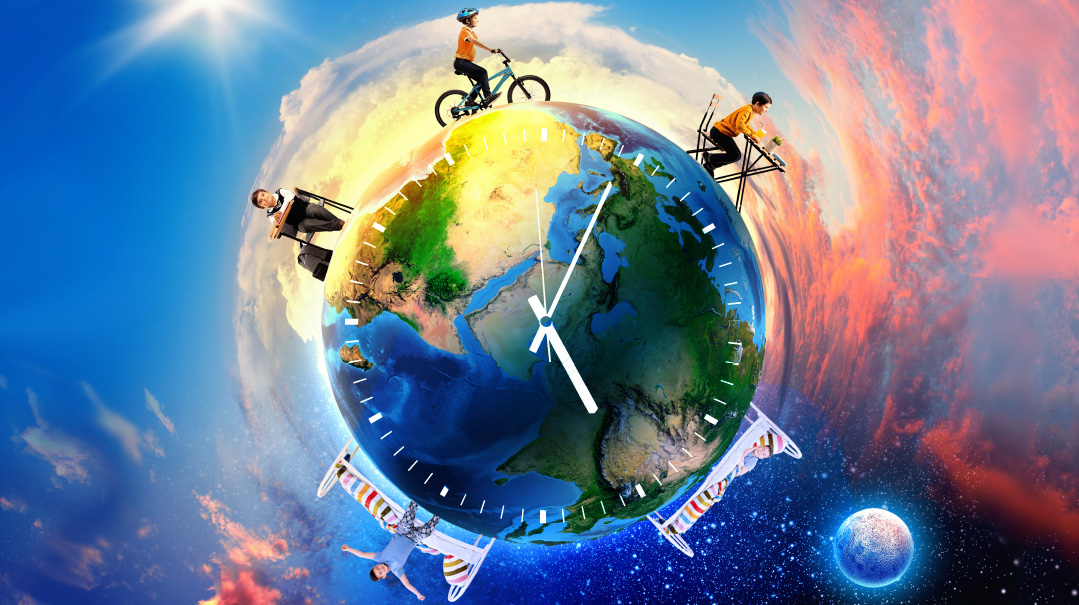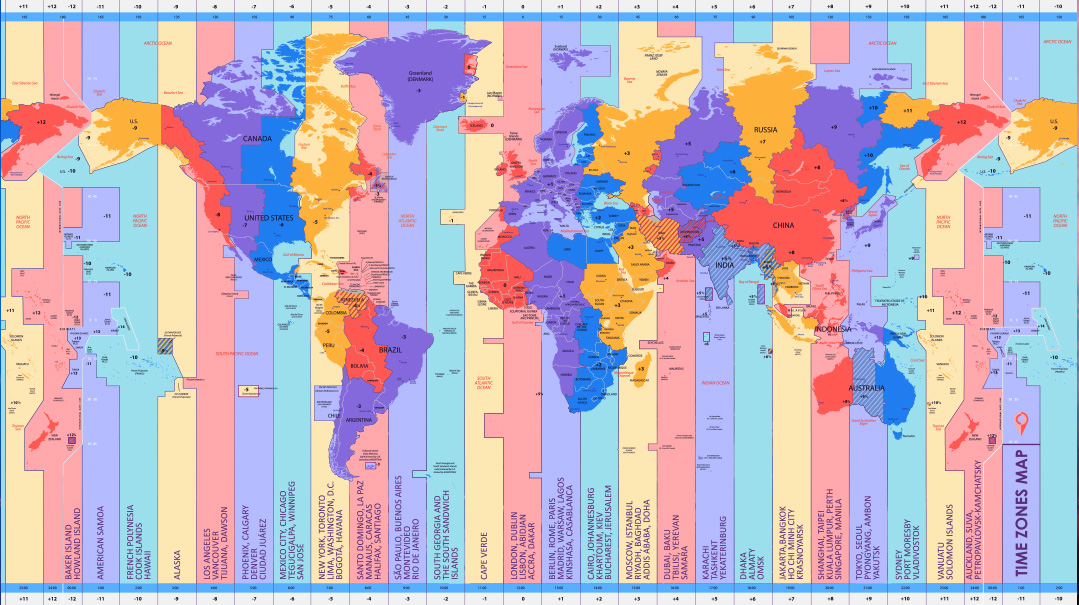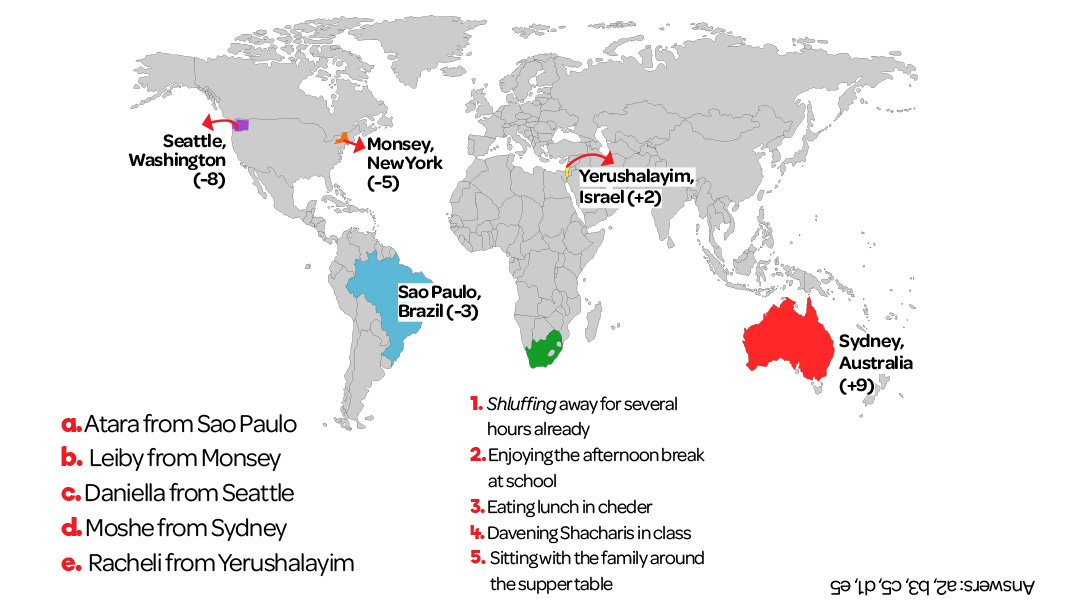It´s About Time!

Some time zone issues that played a part in historical events and tragedies... including the sinking of the Titanic!

First Thing´s First
Before we hear about the Titanic, let’s first figure out what time zones are anyway.
Time zones are areas on Earth that have a specific time that all citizens of those regions set their clocks to. And these time zones start at a place — an imaginary place — called the prime meridian. This imaginary line runs vertically through the United Kingdom and splits the globe into the Eastern Hemisphere and the Western Hemisphere. All other time zones are set based on this imaginary line.
Greenwich Mean Time (GMT) is the time zone that runs along the prime meridian, symbolizing the universal starting point for every time zone in the world. Today, that time zone is formally known as Coordinated Universal Time (UTC), but GMT is the term more commonly used.
Why Time Zones?
Now you may be wondering why we need time zones if they’re all based on an imaginary line that leads to more imaginary lines. I mean, we all like to imagine things, but lines… why?!
Before the world had established time zones, every city had its own local time. Towns based their local time on when the sun was directly overhead (that was noon). That basically worked until mass transportation, in the form of trains, began to run. If trains were to run on schedule and not get into accidents, there needed to be set times everywhere. It couldn’t be 12:00 in one town and 12:15 in the village next door. In fact, there were 144 different local times in America in 1883, and thousands of times around the world!
Canadian engineer Sir Sandford Fleming proposed worldwide time zones in 1878. He recommended dividing the word into 24 time zones (one for each hour of the day). Each zone was to be spaced 15 degrees of longitude apart — and each one hour apart from its neighboring zone. Longitude and latitude make up an imaginary system of lines that run vertically (longitude, like the word long) and horizontally (latitude, like the word flat) around the Earth and are measured in degrees. Although they’re (more) imaginary lines, they’re vital for navigation and geography. So, time zones really divide time and space. Cool!
Anyway, back to Sir Fleming. Initially, there was a great deal of opposition to his idea. Cities and towns liked time the way it was, thank you very much. And they had no interest in changing anything (because that’s more work and confusion, at least at first). But, by 1883, America’s railroad network had adopted the idea, for the sake of safety (no accidents, please!) and convenience (schedules, schedules!). They divided the continental United States into four zones: Eastern, Central, Mountain, and Pacific.
But it wasn’t until 1918 that time zones were officially adopted in the United States. Many other countries followed. Today, most countries have adopted standard time zones. It makes communication, travel, and business possible around the world. Today it’s almost impossible to imagine a world where the time zone could change every few miles.

Did Time Zones Sink the Titanic?
The Titanic story is famous. It was a massive, expensive, state-of-the-art ship that was sunk by an iceberg. How could time zones have been involved?!
While there were many factors that played a role in the tragedy, time zones could have had their part in sinking the famous ship — and in delaying the rescue efforts afterward. The Titanic was traveling from England to New York, and the ship’s crew had to adjust their clocks as they crossed the different time zones.
But there was confusion about the time difference between the Titanic and the United States — and some historians believe this could have contributed to the ship’s fateful collision with the iceberg on April 14, 1912. About two days earlier, general warnings had been put out to ships in the area that there were icebergs, growlers (huge chunks of ice), and field ice in the waters where the Titanic was. Although it is unclear whether the Titanic’s captain ever received these messages, if he had, he might have thought he had more time to navigate around the icebergs because of lack of clarity regarding time zones. And some researchers think the ship’s lookouts who spotted the iceberg could have been operating on British time, while the bridge’s crew (a “bridge” is a platform in the middle of the ship from where the captain or other seamen direct and command the crew) was operating on New York time, further complicating matters — but this theory has never been confirmed.
When the Titanic hit the iceberg, it was around 11:40 p.m. on the ship’s time. But in New York, it was around 9:50 p.m., and in other parts of the United States, it was even earlier. This time difference could have made it difficult for the crew to get help quickly, as people on land did not immediately realize the severity of the situation. Some ships may have been closer to the Titanic than others depending on their location in relation to the time zones, but this was not clear to them at the time.
It took a few hours for the Carpathia, another ship, to arrive and help rescue the survivors. Of course, we will probably never know how big a role time zones played in the tragedy. The time difference was only about one hour and 50 minutes, so time’s impact on the rescue was probably quite minor compared to other factors, like the Titanic’s inadequate number of lifeboats. Nevertheless, the catastrophe in which 1,500 people lost their lives continues to fascinate people over 100 years later.
Two Birthdays in One Year and Other Dateline Fun
The International Date Line is an imaginary line that runs from the North Pole to the South Pole, and it marks the boundary between one day and the next. If you cross the International Date Line from west to east, you will gain a day, and if you cross it from east to west, you will losegain a day.
This means that theoretically it’s possible to celebrate your birthday twice in one year if you cross the International Date Line on your birthday. For example, if you live in Australia, and your birthday is on June 25th, you could fly somewhere east of the International Date Line (like parts of French Polynesia or some of New Zealand’s islands) and you’ll arrive on June 24th. Then you can celebrate your birthday again… that is, if you’re not too tired and jetlagged to do it. Fun to think about, huh?
There are numerous flight paths that cross the International Date Line, and if you’re on one, you can experience the same day twice or skip a day entirely, depending on which way you’re going.
The International Date Line is something that comes up in halachah, too, which makes sense. Because if you davened Shacharis and then cross the dateline, do you need to daven Shacharis again? According to the Star-K, it depends. If one davens Shacharis on Monday morning on a plane flying westbound, and crosses the dateline “into” Tuesday morning, one does not daven Shacharis again. But if one crosses eastbound and witnesses an additional sunrise, one would daven Shacharis again, even if the day is repeated. Confusing! But don’t take my word for it, check with your LOR (Local Orthodox Rabbi).
And if you want to stand in two days at once (i.e., stand on the International Date Line itself), you’re kinda outta luck. The dateline used to run through Fiji’s Taveuni Island, so people could literally plant a foot in two days at the same time. But the dateline was moved to avoid the crazy confusion that ensues when there could be two different days in the same country. (The International Date Line is not actually a straight line; it zigzags around islands and countries so that it is not two different days in the same place.) Nowadays, if you want to experience two days at once, you have to charter a boat or take a cruise along the International Dateline.
A Minute Around the World
It’s five o’clock in London, and Brachie and her sisters are relaxing with some biscuits before starting their homework. They’re wondering what kids all around the world are doing right now. See if you can match the kid and location to the appropriate activity, based on the map below that tells you how many hours ahead or behind London those places are.

How Many Time Zones Are There in America?
- 4
- 6
- 9
- 11
- All of the above.
The contiguous (kun-tihg-you-us) United States (i.e., the 48 lower states, without Hawaii and Alaska) has four time zones: Eastern, Central, Mountain, and Pacific. When you add Alaska and Hawaii, you get six zones. When the various US territories and other US possessions are added, that number shoots up to nine. And if you add in the time zones of two uninhabited US territories way out in the remote Pacific Islands, Howland Island and Baker Island, the total goes up to 11 time zones. So, any way you answered, you were right!
All in Good Time
Time zones are essential for keeping the world running smoothly. Can you imagine trying to schedule a virtual meeting with someone on the other side of the world without time zones? What about trying to fly to another country and not having any clear idea of what time it would be when you would get there? And what if there were connecting flights involved?! It would be a mess!
From business to transportation, from government to health care, from media to technology, accurate timing is key. Time zones don`t seem so imaginary anymore, do they?
(Originally featured in Mishpacha Jr., Issue 964)
Oops! We could not locate your form.






